It’s a fact—rabbits are cute, cuddly, and make great pets! Dwarf rabbits are perhaps the cutest of them all!
No longer exiled to outdoor hutches, more and more rabbits are living alongside us in our homes.
Dwarf rabbits are especially popular as small animal companions.
But do they make happy and healthy pets?
Yes, dwarf (also often called mini) bunnies are adorable, and their small size makes them easier to handle than giant rabbit breeds.
But is a dwarf breed the right rabbit for everyone?
How did dwarf bunnies get so small, and what do potential owners need to know about caring for these pint-sized pets?
In this article we’ll explore the pros and cons of owning a dwarf rabbit. Here’s what you should know if you’re thinking about acquiring a dwarf bunny!
What are dwarf rabbits?
Wild rabbits have been domesticated by humans for a very long time. Early on, they were primarily kept as food animals, and for their soft fur.
Today, there are over 100 individual rabbit breeds, ranging from dwarf to giant…and every size in between.
Dwarfism in rabbits and other animals is caused by a genetic mutation. Researchers have found that deactivation of the HMGA2 gene causes dwarfism in rabbits.
Dwarfism can occur naturally in rabbits and other animals. Over time, the small size and altered craniofacial structure of naturally-occurring dwarf rabbits became desired physical traits.
We began to breed certain dwarf rabbits to emphasize those cute faces and compact bodies. However, certain health concerns are associated with miniature size, especially jaw and tooth problems.
The Netherland Dwarf is generally considered to be the original dwarf breed, but today there are many others as well.
Just how small are dwarf rabbits? Let’s take a look at the numbers.
Dwarf rabbit size
How big do dwarf bunnies get? Dwarf rabbit breeds generally weigh between 1 ½ to 3 pounds, with many in the 2 to 2 ½ pound range. A few dwarf breeds (such as the Dwarf Lop, or Mini Lop) can be as large as 5 pounds.
What’s the smallest dwarf bunny size? Among domestic rabbits, the Netherland Dwarf is often cited as the smallest breed. The American Rabbit Breeders Association states that this breed’s maximum weight is 2 ½ pounds.
There is a rare wild rabbit called the Columbia Basin Pygmy Rabbit which weighs less than one pound when fully grown!
Dwarf rabbit characteristics
The mutation for dwarfism in the rabbit results in several physical traits that are seen across the dwarf breeds.
Characteristics of rabbit dwarfism include round, compact bodies, short noses, small ears, and a head size that is disproportionately large compared to body size.
Dwarf rabbits can have short or long fur, regular or lop ears, and come in a variety of coat colors and patterns.
While cute, the small, babylike head size and shape makes dwarf rabbits prone to a dental problem called malocclusion.
Malocclusion occurs when the upper and lower incisor teeth do not meet together properly and fail to wear down with use.
Because a rabbit’s teeth never stop growing, teeth that do not align will grow long and cause the rabbit significant health problems.
We’ll take a closer look at dental malocclusion when we look at overall dwarf rabbit health later in the article.
Dwarf rabbit breeds
Because they are such popular pets, the number of dwarf rabbit breeds has grown in recent years. The Netherland Dwarf is often used in the creation of new dwarf breeds.
Let’s look at the Netherland Dwarf and a few other popular mini breeds.
For a complete list, the American Rabbit Breeders Association maintains a listing of 49 recognized rabbit breeds of all shapes and sizes on their website.
Netherland Dwarf rabbit
The Netherland Dwarf is one of the most popular pet rabbit breeds. The breed originated in the Netherlands in the early 1900s. A small breed called the Polish rabbit was bred with small wild rabbits to create the Netherland Dwarf.
Today, the Netherland Dwarf is often used as a foundation breed for other dwarf rabbits.
The Netherland has a soft, glossy coat that is lower in maintenance compared to many long-haired rabbit breeds. The coat comes in a wide variety of colors and patterns.
Some dwarf rabbit breeds have a reputation for being a bit nervous and timid. Good Netherland Dwarf breeders have made pleasant temperament a priority, and most are friendly, playful, and curious when handled correctly.
Because they are so small and can have sensitive personalities, this breed is not always recommended for households with very young children.
It’s important to teach children how to pick rabbits up correctly and interact with them in a way that won’t startle them.
The shortened, babylike face of the Netherland Dwarf can cause health issues. Dental malocclusion is common, and the breed can also be prone to some respiratory problems due to the small nose and mouth.
The Netherland Dwarf can also suffer from other health issues common to rabbits of all sizes, such as certain gastrointestinal and foot problems, as well as uterine cancer in unspayed females.
Dwarf Lop rabbit
The Dwarf Lop is also often called the Mini Lop. Lop rabbits come in different sizes and varieties, and all are known for their long, floppy ears.
The Dwarf is a relatively new Lop breed. Larger Lop rabbits were crossed with smaller breeds (often the Chinchilla) to create these small Lops.
The Dwarf Lop comes in a wide variety of coat colors and patterns. The fur is short and relatively low maintenance compared to long-haired breeds.
The breed is known for its good temperament. Fans of the Dwarf Lop praise its calm and affectionate nature.
The Mini Lop is larger and sturdier than the Netherland Dwarf, but should still be handled with care, especially by children.
The small head size makes the Dwarf Lop prone to dental malocclusion, and it can also suffer from problems related to those floppy ears.
All Lops should be monitored for ear infections and ear mites. Some Lops may also have a narrow ear canal which can become clogged.
Dwarf Lionhead rabbit
The Dwarf Lionhead is often simply called the Lionhead, since it was created as a dwarf breed that weighs no more than 3 ¾ pounds when fully grown.
The Lionhead is known for its fluffy mane of fur around the head. Lionheads have a mane gene. A rabbit with one copy of the gene will have a single mane, and one with two copies has a double mane. Some can be born with no mane gene at all.
Lionheads come in a variety of coat colors and markings. Their long fur does require a good bit of grooming. Experts recommend regular grooming sessions with slicker brushes and steel combs.
They will also molt at certain times of the year. Be sure to groom them frequently, as self-grooming can cause them to ingest large amounts of their shed hair.
As a dwarf breed, the Lionhead can be prone to dental malocclusion. All that fur also can make it prone to hairballs and digestive issues. Lionheads can also suffer from respiratory problems.
Like other very small rabbits, the Lionhead is delicate and should always be handled with care.
Dwarf rabbit health
Dwarf rabbit breeds can have health issues common to all rabbits, as well as a few health problems associated with their dwarfism.
If you are new to rabbit ownership, it’s important to be aware of a few common bunny health issues. Here’s a brief rundown of conditions common to all rabbits, and how they can be magnified in dwarf breeds.
A respiratory disorder known as “snuffles” is common in rabbits. Snuffles is caused by a bacterial infection and can cause runny nose, sneezing, and inner ear infections (indicated by head tilt).
A dwarf rabbit’s craniofacial structure can cause snuffles-related breathing problems. Those small, shortened noses of dwarf rabbits can become more easily blocked with a case of the snuffles.
Gastrointestinal stasis is another health issue common in all rabbits. GI stasis occurs when your rabbit’s digestive system functioning slows down or stops.
It can be caused by poor diet, lack of exercise, stress, or pain from other health problems. GI stasis is a serious condition and veterinary treatment is required to get your rabbit’s gut moving again.
Uterine cancer can be a problem in unspayed female rabbits of all sizes. It’s most common in females over two years of age. Females should be spayed at a young age as a preventive measure.
What’s the most common health issue in dwarf rabbits? It’s time to talk about dental problems!
Dwarf rabbit dental problems
The most common reason people bring pet rabbits of all breeds and sizes to the veterinarian is dental problems.
Rabbit teeth “erupt continuously” which means they are always growing. If a rabbit has well-aligned jaws and eats a rough, abrasive diet (like in the wild) the teeth will wear down evenly.
Unfortunately, many pet rabbits eat a diet which is not coarse or fibrous enough to wear their teeth down as fast as they grow.
Overly long teeth can cause significant health problems, including weight loss, facial swelling and discharge, inability to groom properly, and of course, pain.
The other major cause of dental problems is a special concern with dwarf rabbits: jaw length abnormalities.
Dental malocclusion (misaligned teeth) occurs when the craniofacial bone structure of dwarf breeds causes a shortened upper jaw and a longer lower jaw.
Because the upper and lower teeth are misaligned, they cannot wear down, and then they overgrow.
The overgrown teeth can perforate the rabbit’s cheek and palate in severe cases. Feeding difficulties and pain can cause starvation.
The smaller the dwarf breed, such as the Netherland Dwarf, the greater the chance for malocclusion. Some cases start when the rabbit is as young as 8 weeks old.
A rough diet will not solve dental problems in a dwarf rabbit with uneven jaws. Regular veterinary care is required for dwarf rabbits with dental malocclusion.
Your rabbit’s teeth will require trimming, and in some cases, tooth extraction is necessary. Mouth infections caused by overgrown teeth also require veterinary treatment.
How long do dwarf rabbits live?
What is the dwarf rabbit lifespan? Is the dwarf bunny lifespan shorter than a larger rabbit’s life expectancy because of its dwarfism?
Any rabbit’s lifespan can be influenced by many factors, such as overall health, quality of diet, and level of care.
House rabbits of all sizes tend to live longer than rabbits kept outdoors, because they are vulnerable to predators and extreme temperatures.
A healthy house rabbit can have a lifespan of between 8 and 12 years of age. This range covers all rabbits, but what about dwarf breeds?
Rabbit experts report that smaller rabbits tend to live longer than larger rabbits. A dwarf rabbit can live a long and healthy life with appropriate care.
A proper diet and good dental care are key to maintaining your dwarf bunny’s health and increasing its longevity.
What else do you need to know about caring for your dwarf rabbit? Here are a few tips.
Dwarf bunny care
Like all rabbits, dwarf breeds require regular care. Your rabbit will need proper housing, grooming, and nutrition.
House rabbits live longer and healthier lives than outdoor rabbits. Your indoor rabbit will need a litter box, nest box, bedding, and a cage.
How big should a cage be for a dwarf rabbit? A good rule of thumb is one square foot of space per one pound of rabbit. This is the minimum and bigger is always better!
Even the smallest dwarf rabbit will enjoy a cage that’s large enough to run around in and get some exercise.
Smaller cages also get dirtier faster than large ones. Keep your rabbit’s litter box and cage clean. Do a thorough cage washing once a week.
Short haired dwarf breeds will require a weekly grooming with a bristle brush. Long haired breeds will require more frequent grooming with a slicker brush and steel comb. Long haired rabbits can also develop mats.
Their nails will require regular clipping. Talk to your vet if you have never trimmed a rabbit’s nails before. Your vet will assist you with tooth trimming, a must for dwarf breeds.
What is the dwarf rabbit diet?
Rabbits have sensitive digestive systems that require a diet high in fiber. A proper diet includes quality commercial pellets, daily servings of quality hay, fresh water, and fresh greens.
Favorite rabbit foods include salad greens, parsley, carrots (with the tops), celery, broccoli, and radish tops.
Remember that food quantity guidelines for larger rabbits need to be scaled down for dwarf rabbits.
Rabbits also love to chew, so provide them with commercial chew sticks and apple, willow, or aspen branches.
Should I buy a dwarf rabbit?
Is a dwarf bunny the right rabbit for you? Very small dwarf rabbits are not generally recommended for households with young children. They are delicate and can become frightened or injured with improper handling.
Dwarf rabbits are also not recommended if you plan on keeping your rabbit outside. Remember that many rabbit experts recommend keeping your bunny indoor-only. Dwarf rabbits are especially sensitive to extreme outdoor conditions.
The most important thing to keep in mind when considering a dwarf rabbit is dental problems. Tiny rabbits with babylike faces are prone to dental malocclusion.
Without proper veterinary care, dwarf rabbits can face a lifetime of malnutrition and pain due to misaligned and overgrown teeth.
If you are not prepared to deal with a dwarf rabbit’s health needs, you can consider other non-dwarf breeds that are small to medium in size (between 4 ½ and 7 pounds when fully grown).
These smaller breeds include the Dutch rabbit, the Silver rabbit, the standard Chinchilla rabbit, and the English Angora if you like your bunnies fluffy!
References and further reading
- Carneiro, M., Hu, D., Archer, J. “Dwarfism and Altered Craniofacial Development in Rabbits is Caused by a 12.1 kb Deletion at the HMGA2 Locus.” Genetics, 2017.
- Hu, D. “Identification and Analysis of the Dwarf Mutation in Domestic Rabbits.” Swedish University of Agricultural Sciences, 2014.
- Godfrey, R., Godfrey, D. “Netherland Dwarf Dental Malocclusion.” Universities Federation for Animal Welfare, 2011.
- Huynh, M., Vilmouth, S., Gonzalez, M.S., et al. “Retrospective Cohort Study of Gastrointestinal Stasis in Pet Rabbits.” Veterinary Record, 2014.
- Meredith, A. “Rabbit Dentistry.” European Journal of Companion Animal Practice, 2007.

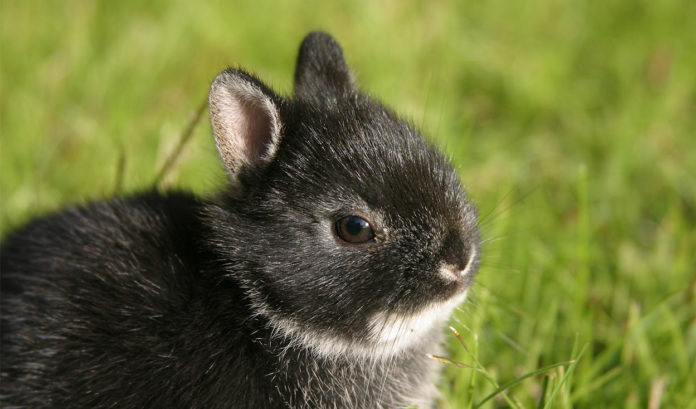
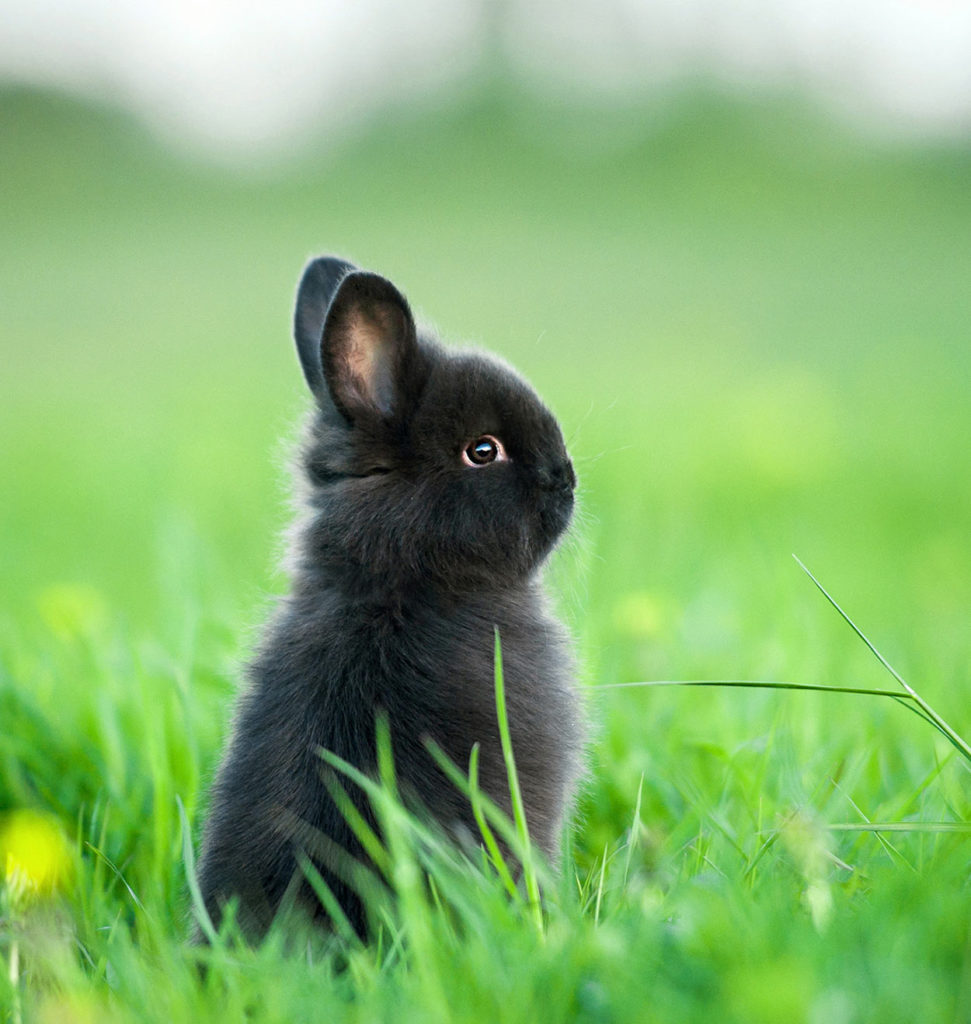
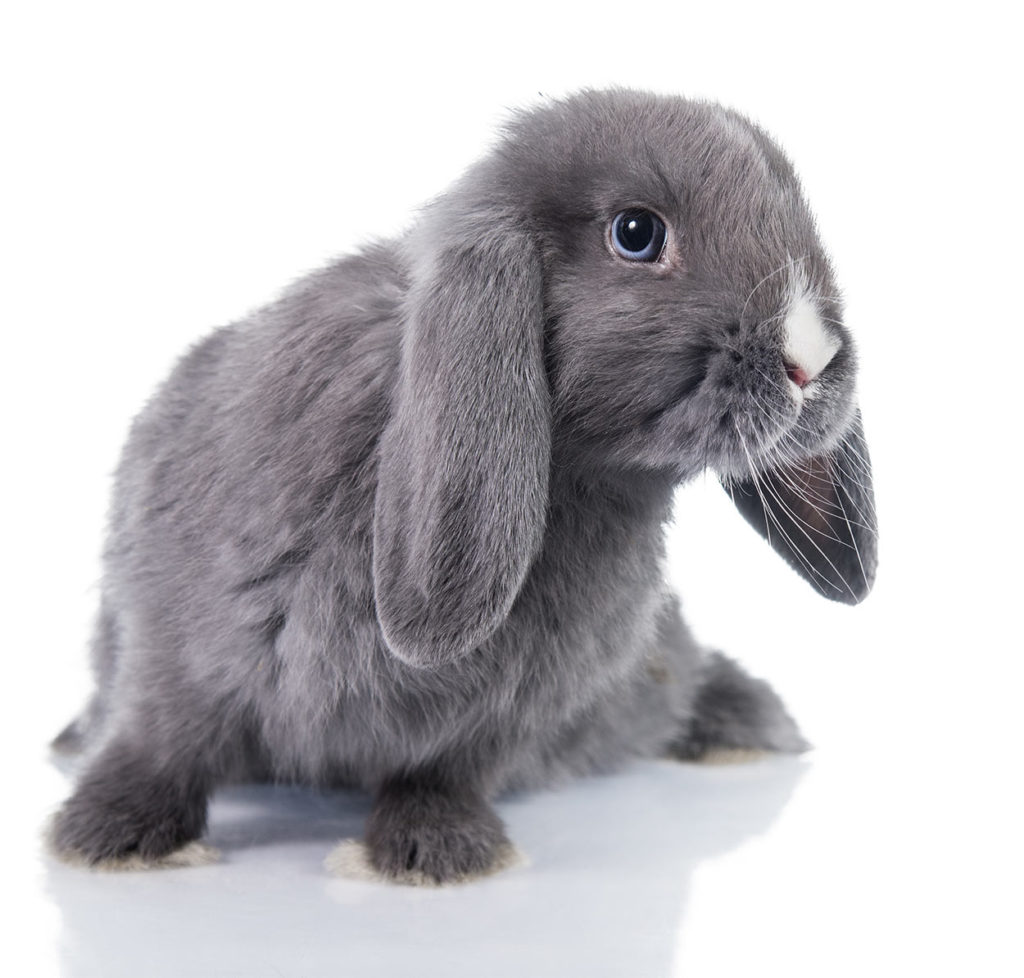
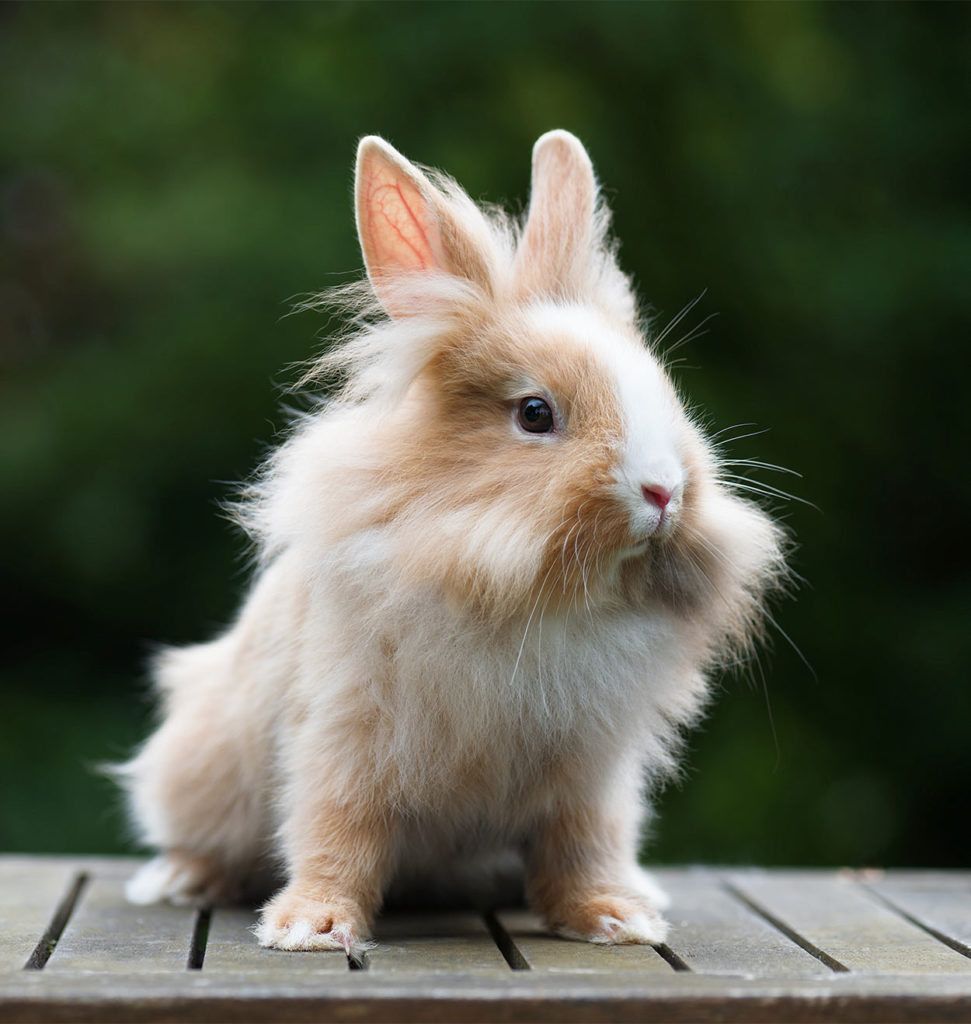
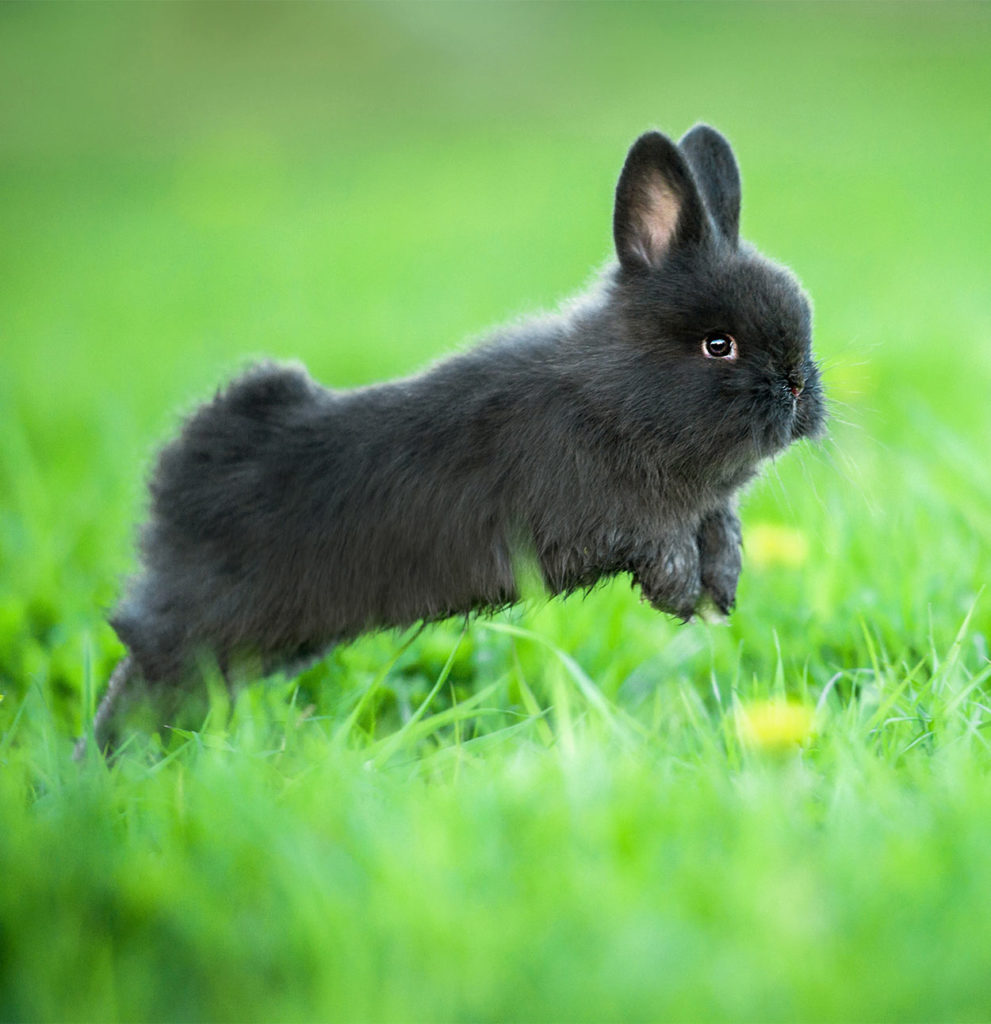
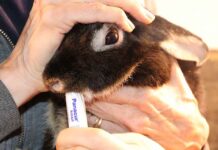
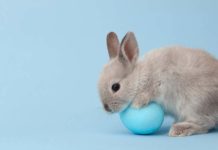
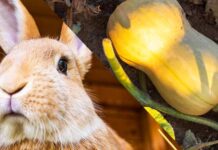










I’ve been wanting to buy a dwarf rabbit ever since college, but the thing is, I’m not very knowledgeable regarding its proper grooming. Also, I never knew that this type of pet is prone to have dental problems. Therefore, I’m thinking of looking for a rabbit groomer instead.
I got 2 rabbits meet her on Craiglist she claimed they are dwarf rabbits one is black n white black along front girl other pink ears white body a black strip on back male not friendly run away from me from time to time touch my foot no circling could they be different breed? Ready to give up please tell me what you think